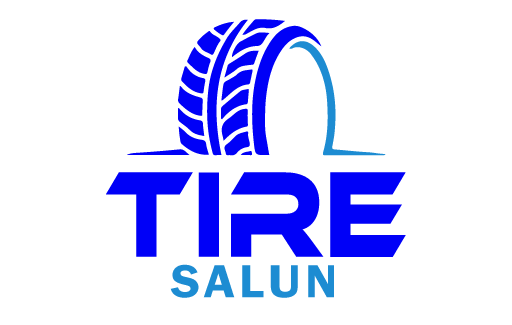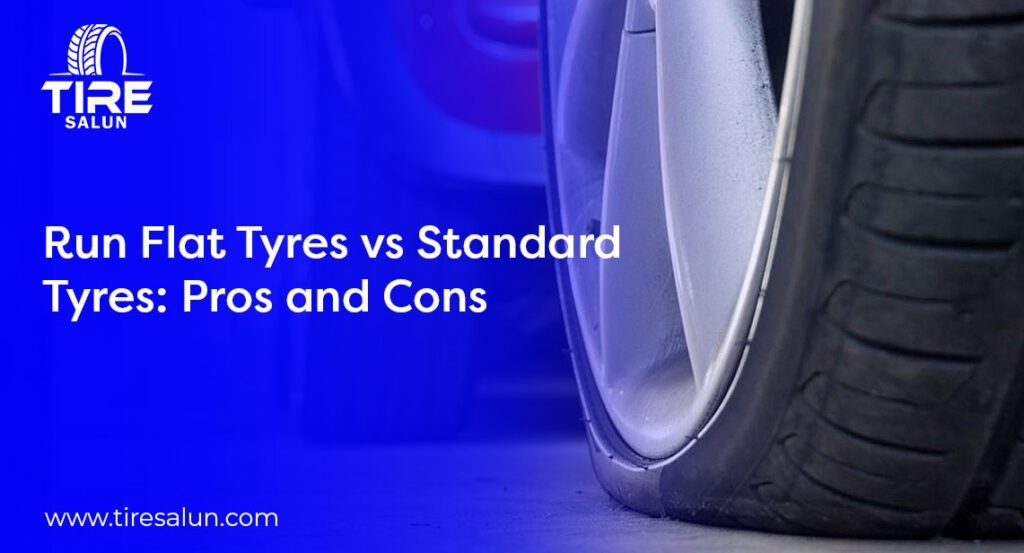In the world of tyre technology, a great shake-up has been brought in by Run Flat Tyres. Built with reinforced sidewalls and put together to support your car even if you get a puncture, they put you back on the road for a short while until you can get off the highway and get that tire changed. But do they fit all types of drivers?
At Tire Salun, we see that many of our customers in the UAE are on the fence between choosing the classic tire and the puncture-resistant run-flat options. In this blog we do a run down of Run Flat Tyres as we do of standard tires to put forth their pros and cons for you to see which one is the best fit for you also we look at how these tires perform in a setting which has long distance driving, high temperatures, and high speed highways.
What Are Run-Flat Tyres?
Run Flat Tyres, which are engineered to still be usable for a short while up to 80 km after a puncture, which lets out air. Instead of the rubber breaking away immediately, we have toughened side walls that enable the car to be driven to a repair shop.
These new tires we present give you that peace of mind which comes with the knowledge that you can get to a service station in no time, which may be during an emergency while on a long-distance drive. Also, they are a comfort feature, which is great for unexpected roadside situations.
In that regard, which is related — standard tires require, at once, to be attended to the moment they get punctured, as too much travel on a flat will damage the wheel rim and make the vehicle unsafe. In the U.A.E., where hot road conditions and long-distance driving are the norm, the ability to continue to do so safely is a great advantage.
Pros of Run Flat Tyres
One of the great benefits of Run Flat Tyres is that they improve your safety. They greatly reduce the chance of getting into an accident, which may happen due to a sudden blowout at high speed. Also, you don’t have to stop your car in unsafe locations or in the middle of intense heat to change a tire right away.
Also that we see that run flats do away with the spare tire, which in turn frees up space in the trunk and also reduces vehicle weight by a small degree. This is a feature that does very well in compact cars and luxury models, which pay attention to design and space optimisation.
Run flat technology is featured in the latest tire models from leading manufacturers, which also include the best run flat options for various tread designs that suit city traffic, off-roading, or all-weather performance. We see this as a great benefit for everyday drivers which including long-distance travellers.
Improve your confidence behind the wheel with our Premium Run Flat Tyres at Tire Salun.
Cons of Run-Flat Tyres
Despite that which are the benefits of Run Flat Tyres, it is a fact that we see trade-off issues. Also, they tend to be at a higher price point for both purchase and replacement. Also, their special structure means that not all tire repair shops will be able to work on them, and some that do get punctured may not be repairable at all.
Another issue is ride quality. What we see with run-flats, which have reinforced sides, is a stiffer ride compared to a regular tire, which in turn may report a rougher ride on bad roads or potholes. Also,o this is more present in cars that don’t have adaptive suspension.
It is also worth noting that run-flat tires tend to have a reduced tread life, which is a result of the use of stiffer materials. If cost per kilometre is what you are mostly concerned with, rather than convenience, standard tires may be the better option.
Also, in which case, run-flat tires work best in vehicles that are equipped with a Tyre Pressure Monitoring System (TPMS). If not for the TPMS, the driver may not know that the car is running on a deflated tire, and this can cause more wear out. Also, we see that what is related, the performance of the run flat tires, is best in cars that have TPMS. If you do not have the TPMS, then the driver may not know that the tire is under pressure, and that can cause the tire to wear out more. Also, run-flat tires see the greatest success in vehicles that have TPMS. But in the absence of a TPMS, the driver may not tell that the tire is going low and that in turn may cause more tire damage.
If you are looking for what is affordable and comfortable, check out the selection at Tire Salun, which we have of top-performing standard tyres.
Which Tyre Type Is Best for UAE Roads?
In the UAE, your choice between Run Flat Tyres and standard tires depends on your driving habits, safety priorities, and what you put into your vehicle. If you are a frequent long-distance driver, often take family in the car with you, or wish to avoid issues on the side of the road in the heat, run-flat tires give you that peace of mind.
On the other hand, if you have a short commute and you are after a smooth ride at a lower price, traditional tires may be the way to go. Also be prepared for unexpected flat tires, which you will have to either repair or which may require you to carry a spare and tools.
UAE’s high temperature also causes increased tire wear, which is seen greatly on tires that are not properly inflated or that may be damaged. As for run flats, which allow you to still drive after a puncture, thus preventing a breakdown in dangerous situations, they are a good choice for safety-conscious drivers.
Frequently Asked Questions (FAQs)
What is the distance I can put on after a run-flat tire?
Most manufacturers report that Run Flat Tyres will allow for safe driving up to 80 km at speeds less than 80 km/h after loss of air pressure.
Can I fix up a run-flat tyre after it has gone flat?
Not at all. What we have is that, based on the location and the severity of the damage, some run-flats are beyond repair. It is best to always seek out a tyre expert before you try to do a repair.
Do run-flat tyres affect ride comfort?
Sure, they usually have reinforced sidewalls, which in turn make the ride firm. Also, many of the better models now feature cushioning technology, which reduces that stiffness.
Are run-flat tires a good choice for hot climates in the UAE?
Yes. Their structure is such that they do well in high temperatures, which is also reflected in the fact that they perform well in emergencies in the UAE’s extreme heat.
Is it safe to mix run-flat tires with non-run-flat tires?
No. Mixing tire types is not recommended, which is also true for safety and performance. It is best to use a full set of the same kind.


